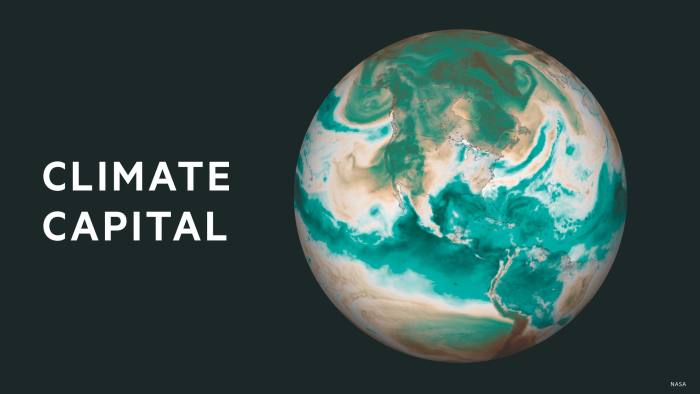The EU’s carbon price has climbed above €100 a tonne for the first time, in a landmark moment for one of the bloc’s key tools to fight pollution.
Allowances traded under the EU’s flagship emissions trading system (EU ETS) rose 2 per cent on Tuesday to hit an all-time high of €101 a tonne.
The threshold has been seen as psychologically important, and a price at which companies may start looking more seriously at investing in expensive emerging technologies such as carbon capture and storage.
The price of carbon credits in the system — a core part of the bloc’s net zero strategy which aims to put a price on pollution — has risen fivefold in the past three years, and gains have accelerated in recent weeks as the EU has tightened rules to make the system more onerous for polluters.
“The fundamental point about this market is the EU has cleared the way for higher prices as that is what is ultimately needed to meet their aims of cutting emissions,” said Mark Lewis, head of climate research at hedge fund Andurand Capital Management.
New rules agreed in December and in the process of being ratified, which will effectively see emissions allowed under the scheme falling to zero by 2039, are the “long-term structural bullish driver of this market”, Lewis added.

Companies operating in the EU in certain sectors — including gas, coal power generation or industrial manufacturing — are obliged to buy carbon credits. Each one allows the emission of one tonne of carbon.
After languishing for much of past decade, when a surplus of allowances built up following the financial crisis, the EU’s carbon price has marched higher in the wake of the bloc’s newly agreed carbon pricing rules as well as rising societal pressure for governments and businesses to curb pollution and limit warming.
Increased coal use during the energy crisis has also spurred buying, as coal emits roughly twice as much carbon as gas when burnt.
EU lawmakers gave initial approval this year to new rules that would make the system tougher. The total number of allowances in the system will fall over time, and the number given out to polluters for free will also fall.
Vertis Environmental Finance said the recent rise in prices had been driven in part by utilities hedging their exposure, and that demand for credits from industrial polluters had been “relatively muted”. Hedging activity could tick up since temperatures in northern Europe were forecast to drop below the average for this time of year next week, it said.
Redshaw Advisors also said last week that recent gains had come “despite” a slowdown in buying from polluters regulated under the system.
Some analysts said the €100 threshold would incentivise investments in emerging clean technologies such as carbon capture and hydrogen, but major polluters have warned of the impact that higher carbon prices might have on their businesses and on their ability to make investments.
However, EU lawmakers have designed the system to ensure that a portion of the money raised from the sale of the credits goes towards the development of clean technologies and the decarbonisation of industry.
Peter Liese, the European parliament’s lead negotiator on the EU ETS, said in February that it was “very important point” to “keep industry inside Europe and to help them decarbonise”. However, if companies did not decarbonise over the coming years, “there will be scarcity of allowances and that will increase the price”, he said.
An academic study published in the journal Proceedings of the National Academy of Sciences in 2020 found that the EU ETS drove a 4 per cent reduction in European emissions between 2008 and 2016. But progress has mainly been made in the power sector, as generators have switched from fossil fuels to renewables. Solutions for “hard to abate” sectors, such as cement and steel, are typically more expensive and remain in their infancy.
The world’s top climate scientists said last year in a sweeping UN report that climate mitigation solutions costing $100 per tonne of carbon or less “could reduce global greenhouse gas emissions by at least half the 2019 level by 2030”.
Climate Capital

Where climate change meets business, markets and politics. Explore the FT’s coverage here.
Are you curious about the FT’s environmental sustainability commitments? Find out more about our science-based targets here

